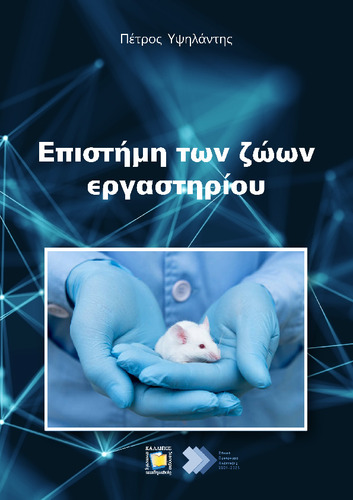| Title Details: | |
|
Laboratory Animal Science |
|
| Authors: |
Ypsilantis, Petros |
| Reviewer: |
Dontas, Ismene |
| Subject: | MEDICINE AND HEALTH SCIENCES, LIFE SCIENCES, BIOLOGICAL SCIENCES > HEALTH SCIENCES > MEDICINE > SURGICAL SPECIALTIES > EXPERIMENTAL SURGERY HUMANITIES AND ARTS > ETHICS > PERSPECTIVES AND LEVELS OF ETHICS > APPLIED ETHICS > BIOETHICS > ANIMAL ETHICS NATURAL SCIENCES AND AGRICULTURAL SCIENCES > AGRICULTURAL SCIENCES > ANIMAL SCIENCE AND ANIMAL PRODUCTS > ANIMAL SCIENCE NATURAL SCIENCES AND AGRICULTURAL SCIENCES > AGRICULTURAL SCIENCES > ANIMAL SCIENCE AND ANIMAL PRODUCTS > ANIMAL WELFARE NATURAL SCIENCES AND AGRICULTURAL SCIENCES > AGRICULTURAL SCIENCES > BREEDING AND GENETIC IMPROVEMENT > BREEDING > ANIMAL BREEDING |
| Keywords: |
Laboratory animals
Laboratory animal science Animal ethics Animal welfare |
| Description: | |
| Abstract: |
The present book is addressed to students and/or graduates of biomedical sciences and aims to introduce them to the basic principles of Laboratory Animal Science, providing them with specialized knowledge for managing a laboratory animal colony, as well as with special knowledge on biology, housing and care, non-surgical experimental procedures (handling, administration of substances, blood sampling), anesthesia and euthanasia of those laboratory animal species most commonly used in biomedical experimental research. The book is divided into the General and the Species-specific Section. The General Section (chapters 1-13) contains information regarding the use of animals in biomedical research and ethics of their use, alternative methods, the relevant legislation, the basic principles of breeding and management of a laboratory animal colony, methods of substances’ administration and sampling of biologic materials, anesthesia, assessment and management of pain and distress, euthanasia, health monitoring and zoonoses. The Species-specific Section (chapters 14-24) contains information regarding the biology, breeding, handling, blood sampling, substances’ administration, anesthesia and euthanasia of the most commonly used laboratory animal species (mouse, rat, gerbil, hamster, guinea pig, rabbit, dog, cat, pig, non-human primates and fish).
|
| Linguistic Editors: |
Alexopoulou, Katerina |
| Graphic Editors: |
Tsakmaki, Eleni |
| Type: |
Undergraduate textbook |
| Creation Date: | 03-12-2022 |
| Item Details: | |
| ISBN |
978-618-5726-21-8 |
| License: |
Attribution - NonCommercial - ShareAlike 4.0 International (CC BY-NC-SA 4.0) |
| DOI | http://dx.doi.org/10.57713/kallipos-153 |
| Handle | http://hdl.handle.net/11419/8790 |
| Bibliographic Reference: | Ypsilantis, P. (2022). Laboratory Animal Science [Undergraduate textbook]. Kallipos, Open Academic Editions. https://dx.doi.org/10.57713/kallipos-153 |
| Language: |
Greek |
| Consists of: |
1. The use of animals in biomedical research 2. Code of ethics and deontology regarding the use of animals for scientific purposes 3. Alternative methods 4. Legislation 5. Basic principles of housing and care of laboratory animals 6. Administration of substances 7. Collection of body fluids 8. Anesthesia 9. Recognition and management of pain and distress 10. Euthanasia 11. Health monitoring of laboratory animals 12. Methodology of animal examination 13. Zoonoses 14. Mouse 15. Rat 16. Gerbil 17. Hamster 18. Guinea pig 19. Rabbit 20. Dog 21. Cat 22. Pig - Minipig 23. Non-human primates 24. Fish |
| Number of pages |
244 |
| Publication Origin: |
Kallipos, Open Academic Editions |
| You can also view | |
| User comments | |
There are no published comments available! | |

